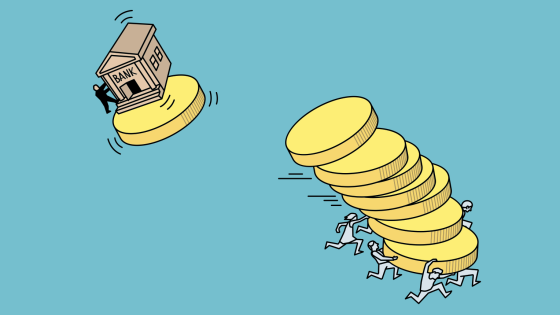Was the recent US housing bust mostly a subprime mortgage event?1 A brief review of the economics literature suggests that this was indeed the case. One of the best known early studies, by Mian and Sufi (2009), used mortgage defaults aggregated at the zip code level from 2005 to 2007 to conclude that a “salient feature of the mortgage default crisis is that it is concentrated in subprime ZIP codes throughout the country”. The first sign of the recent US housing crisis was in the subprime sector, which probably accounts for why so much of the research on this topic only uses data from the subprime sector, and typically includes default or foreclosure outcomes from no later than 2008.
Re-examining the US housing cycle
However, subprime loans comprise a relatively small share of the overall market—about 15% over the full cycle and never more than 21% at the height of the boom. This raises questions about the representativeness of conclusions about the bust based on selected samples from a specific part of the market and a narrow window of time. The passage of time and the availability of new micro data that track mortgage outcomes from the prime, subprime, and government-insured sectors in a panel setting allow us to re-examine what happened during the last US housing cycle.2
- These data show that the crisis was not solely, or even primarily, a subprime sector event. It started out that way, but quickly morphed into a much bigger event dominated by prime borrowers losing their homes.
Figure 1 reports the raw number of homes lost via foreclosure or short sale for five different types of owners we track. For our purposes here, we focus on those who took out prime or subprime. There are only seven quarters - 2006Q3 to 200Q1, at the beginning of the housing market bust - in which there were more homes lost by subprime borrowers than by prime borrowers, although the gap is small as Figure 1 illustrates. Over this period, which is the focus of much of the previous literature in this area, 39,094 more subprime than prime borrowers lost their homes. This small difference was completely reversed by the beginning of 2009, as 40,630 more prime borrowers than subprime borrowers lost their homes just in the 2nd, 3rd, and 4th quarters of 2008. An additional 656,003 more prime than subprime borrowers lost their homes from 2009Q1-2012Q3,, so that twice as many prime borrowers lost their homes than did subprime borrowers over our full sample period.
Figure 1. Total foreclosures + short sales by quarter and owner type

Borrower’s type and home loss
One reason for this pattern is that the number of prime borrowers dwarfs that of subprime borrowers (and the other borrower/owner categories we consider). The prime borrower share varies around 60% over time and did not decline during the housing boom. Subprime borrower share nearly doubled during the boom, but only up to 21%. Subprime’s increasing share came at the expense of the FHA/VA-insured sector, not the prime sector.
This helps put Figure 2’s plot of foreclosure/short sale rates by owner type into proper perspective. Sharply higher subprime distress rates became evident early in the housing bust, just as the previous literature shows.3 However, those high rates never affected anything close to a majority of the market. Loss rates among the much larger group of prime borrowers started to increase shortly thereafter—within a year. The jump in the foreclosure rate for prime owners become even more relevant empirically over time, as the market share of subprime borrowers dramatically declined after 2008.
We then turn to estimating panel data models of the probability of losing a home in foreclosure or short-sale as a function of prime and subprime status and other factors emphasised by the traditional mortgage default literature.4 For example, we can measure negative equity conditions (i.e. when the current loan-to-value (LTV) ratio is greater than one) for each quarter in each ownership sequence, and test how its inclusion in our econometric model changes the importance of prime and subprime labels.
Figure 2. Unconditional distress probabilities (foreclosures + short sales) by quarter and owner type

- Current loan-to-value is a powerful predictor of home loss, regardless of borrower type.
Figure 3 shows that controlling flexibly for current loan-to-value almost fully explains the spike and continued elevated rate of foreclosures and short sales by prime borrowers during the housing bust. Thus, prime borrowers do not lose their homes at appreciably higher rates during the crisis than all cash owners do after controlling for negative equity. Moreover, current loan-to-value explains about three-quarters of all home losses among subprime borrowers on average, including about a half of the spike of the first year of the crisis. Essentially, purchasing or refinancing a home near the cyclical peak just prior to a sharp drop in values is a much more powerful explanation of home loss than the type of mortgage used.
Figure 3. Heterogeneity – prime and subprime borrowers estimates by quarter

The traditional mortgage default literature also posits an important role for borrower illiquidity in the decision to default (Foote et al. 2010). Because there are no large US data sets with individual measures of ongoing unemployment status, we use proxies such as census tract-by-quarter indicators that control for local economic conditions over time at the neighbourhood level.5 They show an economically modest impact, but the role of negative equity remains very powerful. That said, it could be that our better measured loan-to-value control is reflecting some of the impact related to unobserved individual income shocks. For example, only 18% of our owners who ever experienced negative equity ended up losing their homes. That is a large number, given that 40% of our ownership sequences had negative equity for at least one quarter. If only negative equity mattered, all of them presumably would have defaulted and ultimately lost their homes. While we remain agnostic on the precise strength of each of these two mechanisms, our results show that their combined effect is to eliminate almost entirely the empirical importance of the prime and subprime labels in explaining differential probabilities of foreclosure.
None of the other ‘usual suspects’ raised by previous research or public commentators changes this conclusion. Housing quality traits, household demographics (race or gender), buyer income, and speculator status do not have a material influence on outcomes across borrower types. Certain loan-related attributes such as initial loan-to-value, whether a refinancing occurred or a second mortgage was taken on, and loan cohort origination quarter do have some independent influence, but much weaker than that of current loan-to-value.
Concluding remarks
The housing bust and its consequences are among the defining economic events of the past quarter century. The passage of time and new data allows us to characterise the foreclosure crisis as something much more than a subprime sector issue. These findings have potentially important implications for public policy. Regulatory issues are much more challenging when the economic cycle itself plays a large role, as effective regulation is not just a matter of restricting certain exotic subprime contracts associated with extremely high default rates. Our results are also informative for future decisions on bailout policy, as we can rule out one noteworthy reason offered for not aiding homeowners—namely, that the crisis was mostly about irresponsible subprime sector borrowers who were undeserving of transfers.
References
Deng, Y, J Quigley, and R Van Order (2000), “Mortgage Terminations, Heterogeneity, and the Exercise of Mortgage Options”, Econometrica, Vol 68, No2: 275-307.
Foote, C, K Gerardi, L Goette, and P Willen (2009), “Reducing Foreclosures: No Easy Answers”, NBER Macroeconomics Annual 2009, University of Chicago Press, April 2010.
Foster, C and R Van Order (1984), “An Option-based Model of Mortgage Default”, Housing Finance Review, Vol 3, No 4: 351-372.
Kau, J, D Keenan, and T Kim (1994), “Default Probabilities for Mortgages”, Journal of Urban Economics, Vol 35, No 3: 278-296.
Mian, A and A Sufi (2009), “The Consequences of Mortgage Credit Expansion: Evidence from the U.S. Mortgage Default Crisis”, Quarterly Journal of Economics, Vol 124, No 4: 1449-1496.
Footnotes
1 There is no legal definition of what constitutes a subprime mortgage. Researchers have used rules based on lender lists and credit score cutoffs, and in all cases found very high rates of subprime distress. In this work we use lender lists as well.
2 The data contain information on over 33 million unique ownership sequences in 96 metropolitan areas (MSAs) from 1997(1)-2012(3), resulting in almost 800 million quarterly observations. It also include information on all subsequent refinancing activity, enabling us to create ownership-specific panels with financing information from purchase through sale or other transfer of the home. These data are used to provide new stylised facts about the foreclosure crisis and to empirically investigate different proposed explanations for why owners lost their homes during the last housing bust.
3 The other group that shows a sudden and sharp early spike upward around the same time as Subprime is what we call the ‘Small’ group sector. These owners financed their homes from nontraditional ‘small’ entities that issued no more than 100 mortgages throughout our sample period. This group itself is very small in number, never amounting to more than 2%-3% of all owners.
4 See Foster and Van Order (1984), Kau et al. (1994), and Deng et al. (2000), for example.
5 The Panel Survey on Income Dynamics (PSID) does provide information on the employment status of household members, but its samples are too small for our purposes.






